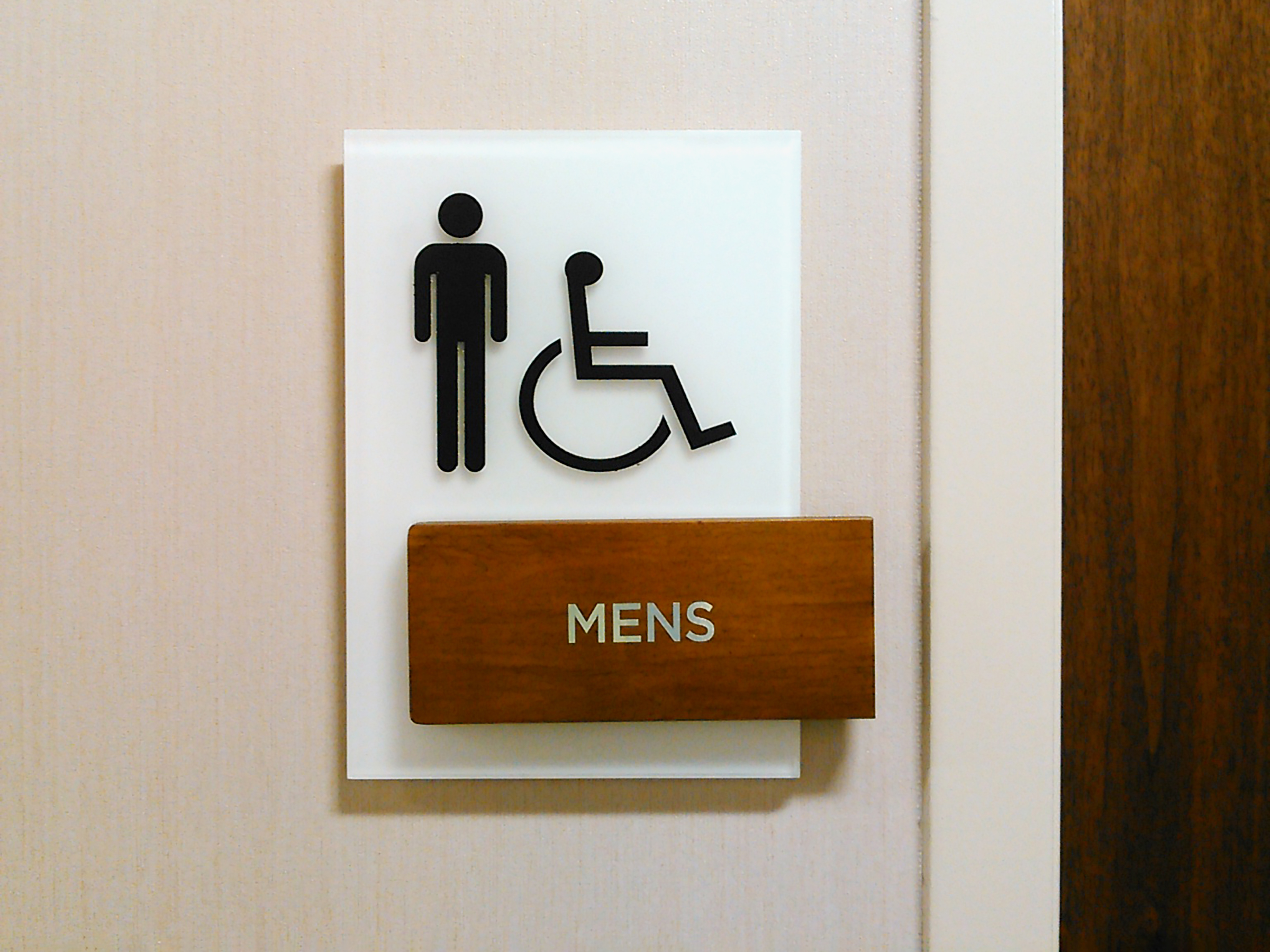Exactly How ADA Signs Improve Availability for Everyone
Exactly How ADA Signs Improve Availability for Everyone
Blog Article
Exploring the Trick Functions of ADA Signs for Enhanced Access
In the realm of availability, ADA signs offer as quiet yet powerful allies, making certain that areas are comprehensive and navigable for people with disabilities. By incorporating Braille and tactile aspects, these signs break barriers for the visually damaged, while high-contrast shade systems and readable font styles cater to diverse aesthetic needs.
Value of ADA Conformity
Guaranteeing conformity with the Americans with Disabilities Act (ADA) is important for cultivating inclusivity and equal gain access to in public areas and offices. The ADA, enacted in 1990, mandates that all public facilities, companies, and transport services accommodate people with handicaps, ensuring they delight in the very same rights and opportunities as others. Compliance with ADA requirements not just meets lawful commitments but also improves a company's online reputation by showing its dedication to variety and inclusivity.
One of the vital elements of ADA compliance is the application of easily accessible signs. ADA indications are developed to ensure that people with specials needs can quickly navigate via structures and areas.
In addition, sticking to ADA regulations can mitigate the threat of lawful repercussions and potential penalties. Organizations that fail to abide by ADA standards may encounter penalties or claims, which can be both financially challenging and harmful to their public picture. Thus, ADA conformity is integral to promoting an equitable setting for everyone.
Braille and Tactile Aspects
The consolidation of Braille and tactile aspects into ADA signs symbolizes the principles of accessibility and inclusivity. It is normally positioned underneath the corresponding text on signs to guarantee that people can access the information without aesthetic help.
Tactile aspects prolong past Braille and consist of elevated signs and personalities. These elements are designed to be noticeable by touch, enabling people to determine room numbers, bathrooms, exits, and other important locations. The ADA sets certain guidelines concerning the size, spacing, and placement of these responsive elements to optimize readability and guarantee consistency across different environments.

High-Contrast Color Pattern
High-contrast color pattern play an essential duty in improving the visibility and readability of ADA signage for individuals with aesthetic disabilities. These schemes are crucial as they make best use of the difference in light reflectance in between message and background, ensuring that signs are easily noticeable, also from a distance. The Americans with Disabilities Act (ADA) mandates using certain shade contrasts to suit those with restricted vision, making it an essential element of compliance.
The effectiveness of high-contrast colors exists in their capacity to stick out in various lights conditions, consisting of dimly lit atmospheres and locations with glow. Typically, dark text on a light history or light text on a dark background is employed to accomplish ideal contrast. Black text on a yellow or white background supplies a raw aesthetic distinction that assists in fast recognition and understanding.

Legible Fonts and Text Size
When taking into consideration the design of ADA signs, the option of readable typefaces and next page suitable text size can not be overemphasized. The Americans with Disabilities Act (ADA) mandates that typefaces need to be not italic and sans-serif, oblique, script, very ornamental, or of unusual type.
According to ADA guidelines, the minimal text height need to be 5/8 inch, and it should increase proportionally with seeing distance. Uniformity in message size adds to a cohesive visual experience, helping people in navigating settings successfully.
Additionally, spacing between letters and lines is important to clarity. Ample spacing protects against characters from appearing crowded, enhancing readability. By sticking to these requirements, developers can significantly boost accessibility, making certain that signs serves its intended function for all individuals, no matter their aesthetic capabilities.
Reliable Positioning Strategies
Strategic placement of ADA signage is crucial for maximizing availability and guaranteeing compliance with lawful standards. ADA standards stipulate that signs need to be installed at a height in between 48 to 60 inches from the ground to ensure they are within the line of sight for both standing and seated individuals.
In addition, indications need to be put nearby to the lock side of doors to enable easy recognition prior to look at this now entrance. This placement assists people locate spaces and spaces without blockage. In situations where there is no door, signs must be located on the local nearby wall surface. Consistency in sign positioning throughout a facility improves predictability, lowering confusion and enhancing total user experience.

Verdict
ADA signs play a vital role in promoting accessibility by integrating features that deal with the needs of people with specials needs. Including Braille and responsive components makes certain critical info comes to the aesthetically damaged, while high-contrast color plans and readable sans-serif typefaces improve visibility throughout numerous lights problems. Reliable placement strategies, such as ideal placing elevations and strategic places, even more help with navigating. These elements collectively promote an inclusive setting, underscoring the significance of ADA compliance in ensuring equivalent access for all.
In the world of accessibility, ADA indicators serve as quiet yet effective allies, making certain that spaces are inclusive and accessible for people with specials needs. The ADA, passed in 1990, mandates that all public centers, employers, and transport services suit individuals with disabilities, guaranteeing they take pleasure in the same rights and possibilities as others. ADA Signs. ADA signs are made to make certain that people with impairments can conveniently browse through buildings and spaces. ADA standards stipulate that indicators must be placed at an elevation in between 48 to 60 inches from the ground to guarantee they are discover this info here within the line of sight for both standing and seated individuals.ADA indications play an important role in promoting accessibility by incorporating features that resolve the demands of individuals with disabilities
Report this page